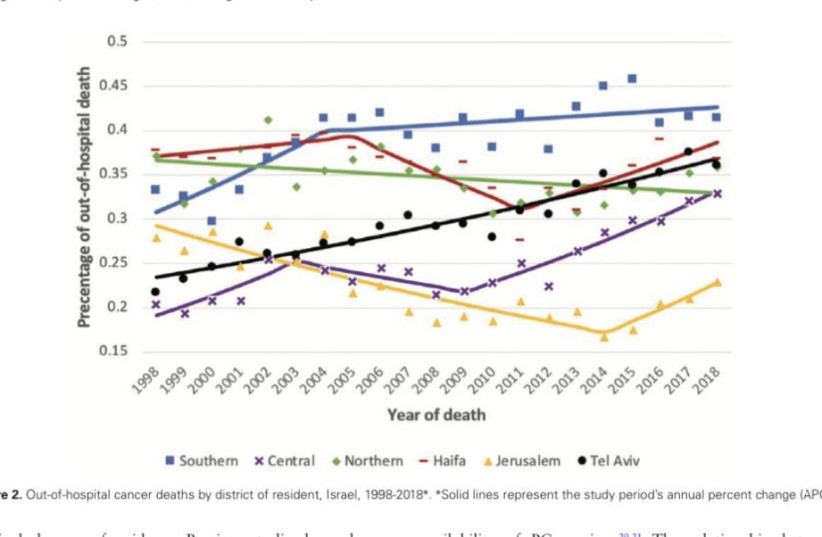More Israelis with terminal cancer or other diseases prefer to die at home among their family members rather than in a hospital, but researchers at Tel Aviv Sourasky Medical Center found great disparities in preferences among people in different regions of the country.
The study examined the place of death of some 210,000 patients with terminal cancer in Israel in the last 20 years. The change has been made possible largely thanks to the expansion of palliative services and home hospice care by the four health funds and companies working for them.
Death from cancer or other diseases at home, in the bosom of the family, is associated with higher quality of life at the end of life, less suffering and less use of unnecessary tests and treatments. This trend also relieves the overcrowding of hospitals that can’t do anything for the terminally ill except to relieve pain.
The study was led by Prof. Ido Wolf, director of the hospital’s oncology division, and Dr. Barbara Silverman of Israel’s National Cancer Registry, the Health Ministry’ Centers for Disease Control and the School of Public Health at Tel Aviv University (TAU), together with Yuval Shalu Mani, a TAU medical student, and attempted to characterize the trends in the location of mortality from cancer.
More patients prefer to die outside the hospital
Looking at the whole country, it was found that over the years more and more cancer patients die outside the hospital. When various variables were examined, it was found that young patients and patients with hematological malignancies such as leukemia or lymphoma are more likely to prefer to die in the hospital.

The greatest effect was also found for the place of residence – the highest percentage of deaths at home was found in the southern district (about 45%), while the lowest percentage was found in the Jerusalem district (only about 20%) compared to the other districts.
In the Tel Aviv district, there has been a significant improvement over the years. During the study period, deaths at home in the Tel Aviv district increased each year by 2.3%. In 2018, 36% of cancer deaths at home were recorded in the Tel Aviv district compared to only 25% in 1998.
These trends emphasize the effort of the health system to improve and expand palliative services and home hospice care while emphasizing the quality of life of patients in their last days. However, the study emphasizes the importance of providing quality services nationwide and equitably to allow all cancer patients throughout the country to decide how and where to be at the end of their lives.
